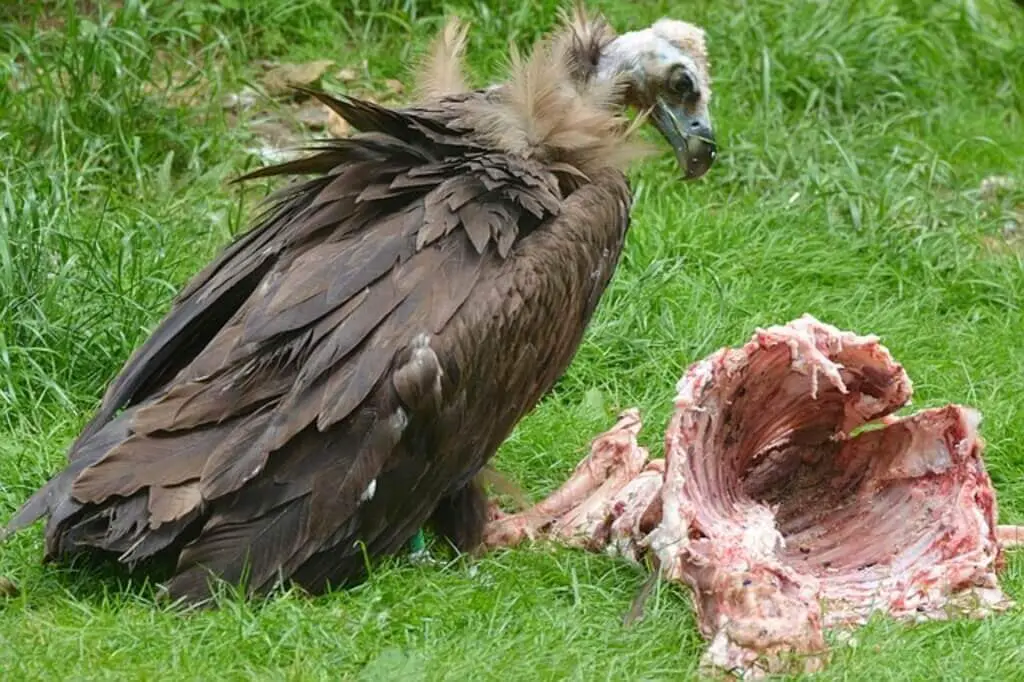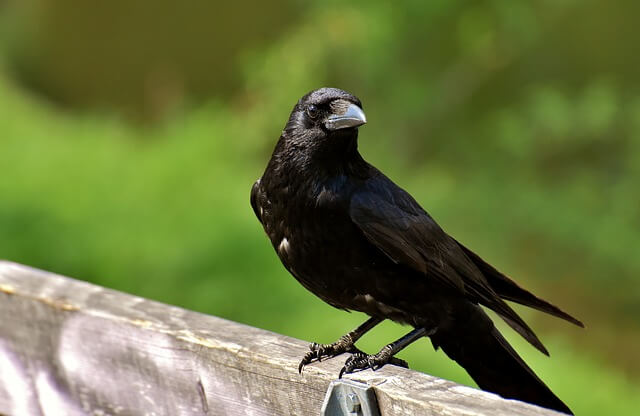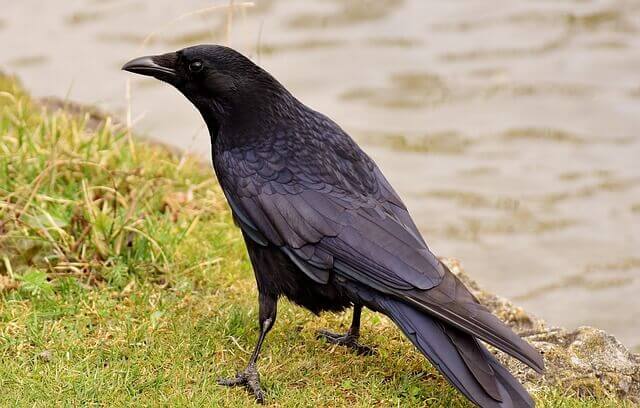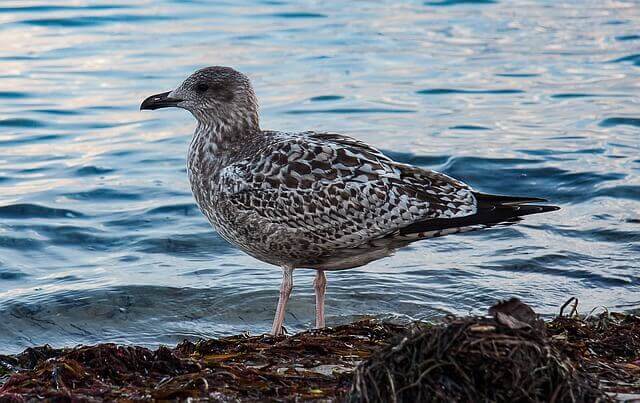Birds That Eat Dead Animals play a vital role in maintaining the balance of nature. These scavengers have a unique ability to consume the remains of dead animals, keeping the environment clean and healthy. From vultures to seagulls, there are a wide variety of birds that specialize in this important task.
In this article, we’ll explore 16 of the most interesting and important birds that eat dead animals, and learn more about their habits and unique adaptations. So, whether you’re a bird enthusiast or simply curious about the natural world, read on to discover more about these fascinating creatures.
Table of Contents
- 1 Birds That Eat Dead Animals
- 1.1 Vultures: Nature’s Cleanup Crew
- 1.2 Buzzards: The Versatile Scavengers
- 1.3 Condors: The Mighty Scavengers of the Americas
- 1.4 Crested Caracaras: Unusual Scavenging Raptors
- 1.5 Eagles: Apex Predators with a Taste for Carrion
- 1.6 Hawks as Scavengers: Vital Role in Ecosystem Maintenance
- 1.7 Kites: Agile Scavengers and Ecological Players
- 1.8 Northern Harrier: The Skilled Scavenger and Stealthy Hunter
- 1.9 Owls: The Nocturnal Hunters that Occasionally Scavenge
- 1.10 Osprey: The Mighty Fish-Eating Scavenger of the Skies
- 1.11 Crows: The Surprising Role of Crows as Scavengers
- 1.12 Jays: The Eco-Friendly Scavengers
- 1.13 Ravens: Master Scavengers and Vital Ecosystem Engineers
- 1.14 Roadrunners: The Scavenging Predators of the Desert
- 1.15 Seagulls: The Unsung Scavengers of the Coastline
- 1.16 Skua Gulls: Top Arctic Scavengers
- 2 Author
Birds That Eat Dead Animals
Vultures: Nature’s Cleanup Crew
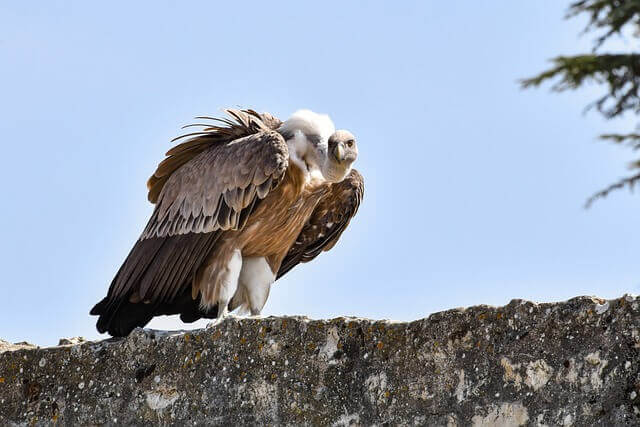
Vultures are often considered the ultimate scavengers of the avian world, with a keen sense of smell that allows them to locate carrion from miles away. There are 23 species of vultures found around the world, and they all have unique scavenging habits. For example, the Egyptian vulture has been known to use stones to crack open the shells of eggs, while the Andean condor can soar at high altitudes for hours, searching for carcasses.
One interesting behavior of vultures is their ability to vomit on command. This adaptation allows them to lighten their weight quickly if they need to take off quickly from the ground while feeding. Additionally, vultures have a bald head and neck, which helps to keep their feathers free from bacteria and other contaminants when they stick their head inside a carcass.
In the table below, we summarize important information about vultures and their scavenging habits:
| Vulture Species | Diet | Feeding Habits |
|---|---|---|
| Turkey Vulture | Carrion, primarily mammals | Scavenges on ground |
| Andean Condor | Carrion, primarily large mammals | Scavenges in the air |
| Egyptian Vulture | Carrion, eggs, and insects | Uses tools to crack open eggs |
In summary, vultures are fascinating birds with unique scavenging habits and behaviors. Their important role in cleaning up dead animals helps to maintain a healthy ecosystem.
Related Post: 18 Facts About Turkey Vultures That Will Shock You!
Buzzards: The Versatile Scavengers
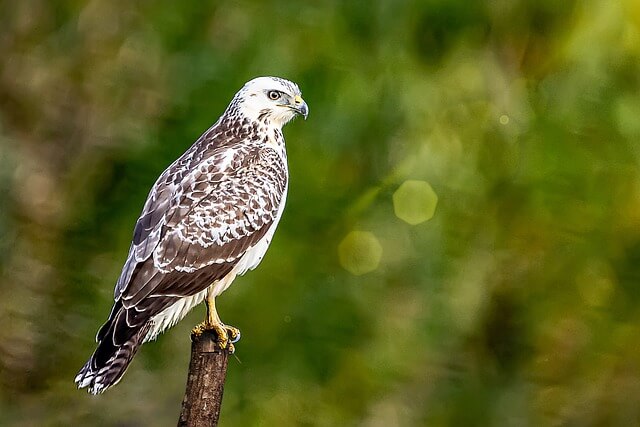
Buzzards are opportunistic scavengers that can be found across the world in various habitats. They belong to the genus Buteo and are often confused with other raptors such as eagles and hawks. Buzzards have a diverse diet that includes small mammals, reptiles, insects, and carrion. They are known for their keen eyesight and ability to soar for long periods of time, using thermal currents to gain altitude without flapping their wings.
One unique characteristic of buzzards is their ability to adapt to changing environments and food sources. They are also known for their vocalizations, which are used for communication and territory defense.
A small table summarizing important information about buzzards’ scavenging habits is as follows:
| Species | Scavenging Habits |
|---|---|
| Common Buzzard | Opportunistic scavenger, feeds on small mammals, carrion, and insects |
| Red-tailed Hawk | Scavenges on carrion, but also hunts small mammals and reptiles |
| Rough-legged Hawk | Scavenges on carrion during winter months when prey is scarce |
| Ferruginous Hawk | Will scavenge on carrion when food is limited, but primarily hunts small mammals |
| Long-legged Buzzard | Opportunistic scavenger, feeds on small mammals, carrion, and insects |
| Himalayan Buzzard | Scavenges on carrion and small mammals |
| Augur Buzzard | Opportunistic scavenger, feeds on small mammals, carrion, and insects |
Overall, buzzards play an important role in maintaining ecological balance by consuming carrion and preventing the spread of disease. Their adaptability and versatility make them a fascinating species to observe in the wild.
Condors: The Mighty Scavengers of the Americas

Condors are a group of large vultures found primarily in the Americas. There are two species of condors, the Andean condor and the California condor, both of which are known for their impressive scavenging abilities. With wingspans reaching up to 10 feet, condors are able to soar over vast distances in search of carrion. Their diet consists mainly of large mammals, such as deer and cattle, although they will also scavenge on smaller animals like rabbits and rodents.
Despite their impressive size and scavenging abilities, condors face many threats. Habitat loss and fragmentation, hunting, and poisoning are just a few of the challenges that these birds face. As a result, conservation efforts have been put in place to protect these majestic scavengers. For example, captive breeding programs have been established to increase the population of the California condor, which was once on the brink of extinction.
| Type of Condor | Primary Scavenging Habits | Wingspan |
|---|---|---|
| Andean condor | Large mammals such as deer and cattle | Up to 10 feet |
| California condor | Large mammals such as deer and cattle, as well as smaller animals like rabbits and rodents | Up to 10 feet |
Related Post: 18 Facts About The Andean Condor That Will Shock You
Crested Caracaras: Unusual Scavenging Raptors

Crested caracaras are opportunistic scavengers found in the Americas. There are several different species of caracaras, including the Crested Caracara, which is found in parts of North and South America. These birds play an important role in the ecosystem by consuming carrion, or dead animals, which helps to prevent the spread of disease and maintain the overall health of the environment.
One of the unique characteristics of caracaras is their behavior when feeding on carrion. Unlike other scavengers, which tend to feed in large groups, caracaras often feed alone or in small groups. They also have a reputation for being bold and unafraid, and have been known to steal food from other scavengers like vultures and eagles.
In the table below, we summarize some important information about Crested Caracaras and their scavenging habits:
| Species | Habitat | Diet | Scavenging Habits |
|---|---|---|---|
| Crested Caracara | North and South America | Carnivorous | Opportunistic, often feed alone or in small groups, known for stealing food from other scavengers |
Overall, Crested Caracaras are fascinating birds with unique scavenging habits that play an important role in maintaining a healthy ecosystem.
Eagles: Apex Predators with a Taste for Carrion
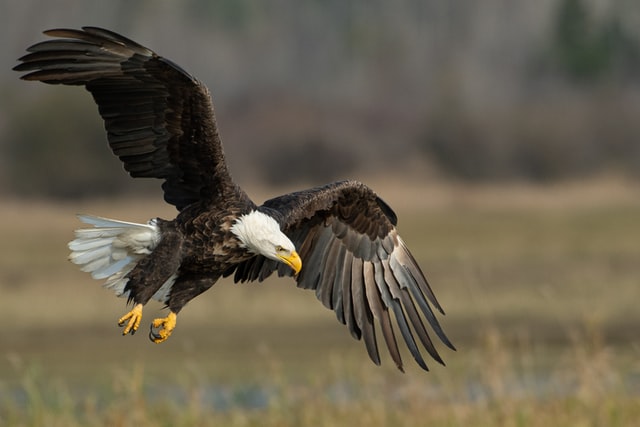
Eagles are some of the most majestic and powerful birds of prey in the world. With their sharp talons and beaks, they are adept at hunting and scavenging for food. There are over 60 species of eagles, ranging from the small and agile booted eagle to the massive and imposing harpy eagle. While eagles are primarily hunters, they are also known to scavenge for food, particularly when prey is scarce.
They will often feed on carrion, such as dead animals or fish, and may even steal food from other predators. Eagles play an important role in maintaining ecological balance by controlling the population of small mammals and birds. They also help to prevent the spread of disease by consuming carrion that could potentially infect other animals.
Here is a small table summarizing the scavenging habits of some common eagle species:
| Eagle Species | Scavenging Habits |
|---|---|
| Bald Eagle | Opportunistic scavenger, known to feed on carrion and steal food from other predators |
| Golden Eagle | Will scavenge when necessary, but primarily a hunter of small mammals and birds |
| Harpy Eagle | Will scavenge occasionally, but mostly hunts for larger prey such as monkeys and sloths |
| White-tailed Eagle | Opportunistic scavenger, known to feed on carrion and fish |
Overall, eagles are incredibly versatile and adaptable birds that play an important role in maintaining the balance of their ecosystems.
Related Post:
- 34 Interesting Facts About Golden Eagles (Detailed)
- 18 Interesting Facts About Bald Eagles (Photos & Details)
Hawks as Scavengers: Vital Role in Ecosystem Maintenance
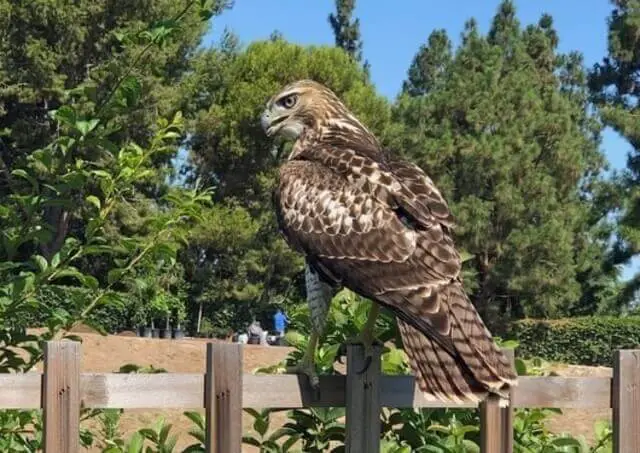
Hawks are a family of versatile birds of prey found across the world. They are known for their sharp talons, keen eyesight, and impressive hunting abilities. However, many hawk species are also opportunistic scavengers that play an important role in their ecosystem. Red-tailed hawks, for example, are known to scavenge on roadkill, while Cooper’s hawks and sharp-shinned hawks will eat small mammals and birds found dead.
The Northern harrier is another hawk species that regularly scavenges on carrion. Hawks’ scavenging habits also have ecological benefits. By feeding on dead animals, they help prevent the spread of disease and reduce the amount of organic matter that would otherwise accumulate in the environment. Additionally, by controlling populations of rodents and other small mammals, hawks help maintain the balance of their ecosystems.
Here’s a table summarizing some important information about hawk scavenging habits:
| Species | Scavenging Habits |
|---|---|
| Red-tailed Hawk | Roadkill |
| Cooper’s Hawk | Small mammals and birds |
| Sharp-shinned Hawk | Small mammals and birds |
| Northern Harrier | Carrion |
Related Post:
- 20 Cooper’s Hawk Fun Facts (with Photos & Information)
- 60 Fun Facts About Harris Hawks (with Photos, ID & Info)
- 32 Fun Facts About Hawks (with Photos & Details)
- Interesting Facts About Red-shouldered Hawks (Detailed)
Kites: Agile Scavengers and Ecological Players
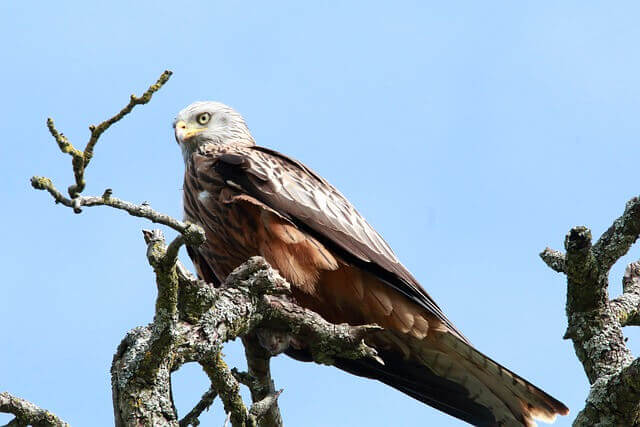
Kites are a group of birds of prey known for their graceful flight and scavenging habits. There are various species of kites, including the black, whistling, swallow-tailed, and Mississippi kites, each with unique features and scavenging behaviors. Kites are social birds that often scavenge in groups, utilizing their sharp vision and keen sense of smell to locate carrion.
They are also known to hunt live prey, such as rodents and insects, using techniques like hovering and soaring. One interesting behavior of kites is their tendency to engage in “kite wars,” where groups of kites will engage in aerial combat over carrion or nesting sites. This behavior is thought to establish dominance within the group and may help ensure successful scavenging and breeding.
Here’s a table summarizing some important information about the scavenging habits of different kite species:
| Species | Scavenging Habits |
|---|---|
| Black kite | Feeds on small mammals, reptiles, and carrion |
| Whistling kite | Often scavenges on roadkill and carrion |
| Swallow-tailed | Feeds on insects and small prey, as well as carrion |
| Mississippi kite | Eats mostly insects, but will also scavenge on carrion |
Related Post:
- 55 Fun Facts About Red Kites (with Photos, ID & Details)
- 47 Fun Facts About Black Kite (with Photos, ID & Details)
Northern Harrier: The Skilled Scavenger and Stealthy Hunter
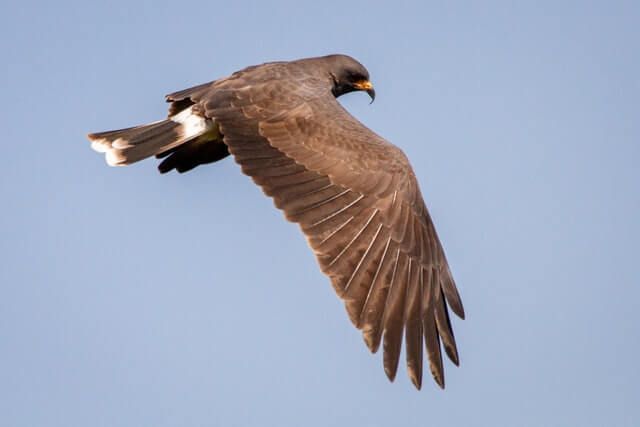
The Northern Harrier, also known as the Marsh Hawk, is a fascinating bird of prey that inhabits open grasslands, marshes, and wetlands. Harriers have a unique hunting style where they glide low over the ground, searching for small mammals like rodents and rabbits. With their keen eyesight and hearing, they can detect prey from a distance and use their wings to shift direction quickly and swoop down for the kill.
Northern Harriers are also known to scavenge on occasion, particularly during the winter months when food is scarce. They will feed on carrion and even visit landfills in search of food. Harriers have unique adaptations for scavenging, including their hooked beaks and strong, grasping talons.
Here is a small table summarizing the Northern Harrier’s scavenging habits:
| Scavenging Habits | Description |
|---|---|
| Carrion Feeding | Harriers will scavenge on dead animals, particularly during the winter months |
| Adaptations | Harriers have hooked beaks and strong talons that help them tear into carrion and grasp prey |
Overall, the Northern Harrier is a fascinating bird that plays an important role in maintaining a healthy ecosystem by controlling rodent populations and helping to decompose dead animals.
Owls: The Nocturnal Hunters that Occasionally Scavenge
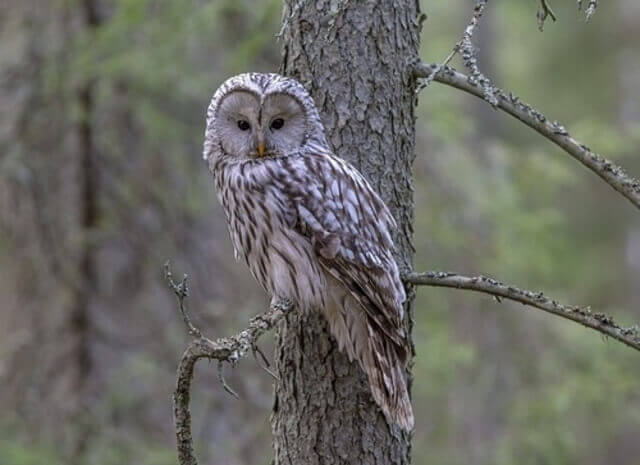
Owls are well-known nocturnal hunters, but they also play an important role as scavengers of the night. There are over 200 species of owls in the world, each with unique characteristics and adaptations for survival. Some species, such as the Barn Owl, are known to eat a variety of prey, including small rodents and insects, as well as carrion. Others, like the Snowy Owl, primarily hunt live prey, but may scavenge when food is scarce.
Owls have fascinating adaptations that aid in their scavenging habits, such as exceptional hearing and vision that allows them to locate prey in the dark. Additionally, their ability to fly silently allows them to sneak up on prey and avoid detection from potential predators. Some species even have specialized feathers that help to muffle sound during flight.
The table below summarizes important information about the scavenging habits of different owl species:
| Species | Scavenging Habits |
|---|---|
| Barn Owl | Opportunistic, will eat carrion |
| Snowy Owl | Primarily hunts live prey, but may scavenge |
| Great Horned Owl | Opportunistic, will eat carrion |
| Eastern Screech Owl | Opportunistic, will eat carrion |
| Burrowing Owl | Opportunistic, will eat carrion |
| Northern Saw-whet Owl | Primarily hunts live prey |
| Short-eared Owl | Opportunistic, will eat carrion |
| Long-eared Owl | Opportunistic, will eat carrion |
| Barred Owl | Opportunistic, will eat carrion |
| Northern Pygmy Owl | Primarily hunts live prey, but may scavenge |
| Flammulated Owl | Primarily hunts live prey |
| Elf Owl | Primarily hunts live prey, but may scavenge |
| Tawny Owl | Opportunistic, will eat carrion |
| Eurasian Eagle-Owl | Opportunistic, will eat carrion |
| Spectacled Owl | Opportunistic, will eat carrion |
| Blakiston’s Fish Owl | Primarily hunts live prey |
Overall, owls are fascinating and important creatures that play a critical role in maintaining ecological balance. Their scavenging habits are just one aspect of their complex and unique adaptations for survival in the wild.
Related Post:
- 53 Fun Facts About The Great Gray Owl (Photos, ID & Info)
- 48 Fun Facts About Snowy Owls (with Photos, ID & Info)
- 35 Fun Facts About The Great Horned Owl (Detailed)
- 17 Fun Facts About Owls That Will Amaze You
Osprey: The Mighty Fish-Eating Scavenger of the Skies

Ospreys, also known as fish hawks, are a unique species of raptor that rely almost exclusively on fish as their primary food source. While they are not typically considered scavengers, ospreys have been known to scavenge dead fish, especially in areas where their primary prey is scarce. In addition to their scavenging habits, ospreys play a vital role in maintaining aquatic ecosystems by controlling fish populations and promoting the overall health of aquatic habitats.
Ospreys are equipped with several physical adaptations that make them excellent fish hunters, including sharp talons and a reversible outer toe that allows them to grip fish with two toes in front and two toes in back. Their unique abilities and important role in the ecosystem make ospreys an essential species to protect and conserve.
Table: Important Information about Ospreys Scavenging Habits
| Species Name | Osprey |
|---|---|
| Primary Diet | Fish |
| Scavenging Habits | Opportunistic |
| Role in Ecosystem | Controls fish populations, promotes health of aquatic habitats |
Overall, ospreys are fascinating birds of prey that play an important role in maintaining the balance of aquatic ecosystems, and their scavenging habits serve as an additional example of their adaptability and resourcefulness.
Related Post: 18 Fun Facts About Ospreys You Didn’t Know
Crows: The Surprising Role of Crows as Scavengers
Crows are highly intelligent scavengers that are found in many parts of the world. There are several different species of crow, each with their unique scavenging habits. For example, the American crow is known for scavenging on carrion, as well as fruits and grains, while the fish crow primarily feeds on marine invertebrates and small fish.
Crows are highly social birds and often form close-knit groups with other members of their species. They have a unique ability to communicate with one another using a variety of calls and vocalizations, which allows them to work together to find food and defend their territory.
| Crow Species | Scavenging Habits |
|---|---|
| American Crow | Carrion, fruits, grains |
| Fish Crow | Marine invertebrates, small fish |
| Hooded Crow | Carrion, insects, small mammals |
| Northwestern Crow | Carrion, fruits, insects |
| Pied Crow | Carrion, insects, small vertebrates |
In summary, crows are fascinating scavengers with a wide range of dietary preferences and unique social behaviors. The table below summarizes some key information about the scavenging habits of different crow species:
Related Post:
Jays: The Eco-Friendly Scavengers
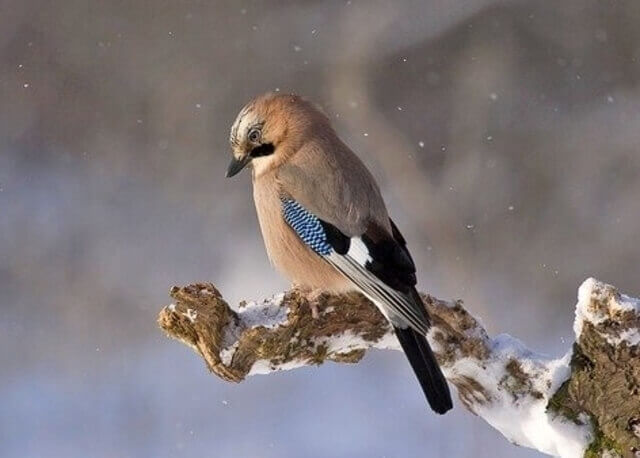
Jays are among the most colorful and charismatic scavengers of the forest, with various species found across the globe. These birds are known for their distinctive calls, intelligent behavior, and impressive vocalizations that allow them to communicate with each other. Jays are opportunistic feeders and are often seen scavenging on dead animals, including small rodents, insects, and even other birds.
Some jays, such as the Steller’s jay, have been known to cache their food to consume later. One of the most fascinating aspects of jays is their complex social behavior. They are highly social birds that often form large flocks and engage in playful activities like games of catch and hide-and-seek.
In the table below, we summarize important information about the scavenging habits of various jay species:
| Jay Species | Scavenging Habits |
|---|---|
| Blue Jay | Opportunistic feeders, will scavenge on small rodents, insects, and other birds |
| Steller’s Jay | Known to cache food, including dead animals, for later consumption |
| Gray Jay | Often scavenges on carcasses of small mammals and birds |
| Green Jay | Will feed on dead animals, but also consumes a variety of other foods |
| Eurasian Jay | Opportunistic feeders that will scavenge on small animals and insects |
Overall, jays are fascinating scavengers that play an important role in their respective ecosystems. Their scavenging habits and social behaviors make them a joy to observe and study.
Related Post:
- What Attracts Blue Jays to your Yard?(Expert Tips)
- 15 Best Bird Feeders For Blue Jays (Tried & Tested 2022)
Ravens: Master Scavengers and Vital Ecosystem Engineers
Ravens are highly intelligent scavengers found in the wilderness across the world. They are part of the corvid family and known for their complex social behavior, problem-solving abilities, and vocalizations. There are eight species of ravens, each with slightly different scavenging habits. For example, the Common Raven is known to scavenge on carrion, while the White-necked Raven also feeds on insects, fruit, and seeds.
Ravens play a critical role in maintaining the ecological balance by consuming animal carcasses that could otherwise lead to the spread of diseases. They also act as ecosystem engineers by spreading seeds and fertilizing the soil with their droppings. A small table summarizing important information about their scavenging habits is provided below.
| Species | Scavenging Habits |
|---|---|
| Common Raven | Feeds on carrion, small mammals, birds, and insects |
| White-necked Raven | Feeds on carrion, insects, fruit, and seeds |
| Australian Raven | Feeds on carrion, insects, and small mammals |
| Fan-tailed Raven | Feeds on carrion, insects, and fruit |
| Brown-necked Raven | Feeds on carrion, insects, and small mammals |
| Chihuahuan Raven | Feeds on carrion, insects, and fruit |
| Little Raven | Feeds on carrion, insects, and small mammals |
| Thick-billed Raven | Feeds on carrion, small mammals, and insects |
Related Post: 18 Fun Facts About Ravens That Will Amaze You
Roadrunners: The Scavenging Predators of the Desert
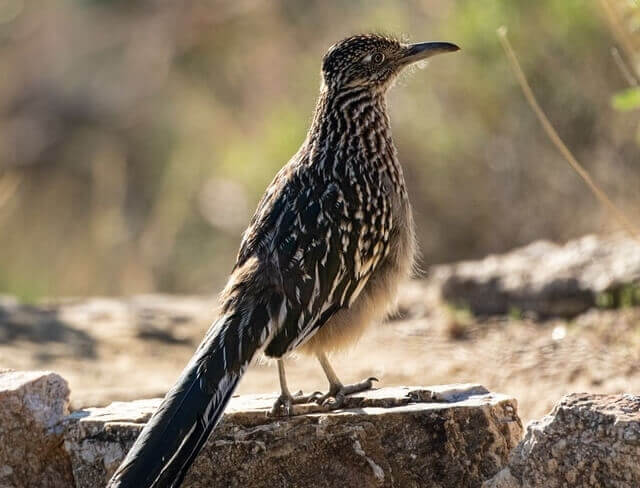
Roadrunners are a type of bird commonly found in the deserts of the southwestern United States and Mexico. Known for their distinctive appearance and speedy movements, these birds are also skilled scavengers. They are opportunistic feeders and will eat a variety of prey, including dead animals. One of the unique characteristics of roadrunners is their ability to swallow prey whole, thanks to their flexible necks and long beaks.
They also have zygodactyl feet, with two toes pointing forward and two pointing backward, which help them to grip and carry their prey. In addition to scavenging, roadrunners are also skilled hunters and will prey on insects, lizards, and small mammals. They are known for their lightning-fast running speeds and can reach speeds of up to 20 miles per hour, although some specimens have been recorded running as fast as 42 km/h (26 mph).
The table below summarizes some key information about roadrunners and their scavenging habits:
| Species Name | Scavenging Habits | Prey |
|---|---|---|
| Roadrunner | Opportunistic scavenger | Dead animals, insects, lizards, small mammals |
Related Post: 35 Fun Facts About Roadrunners (with Photos & Details)
Seagulls: The Unsung Scavengers of the Coastline
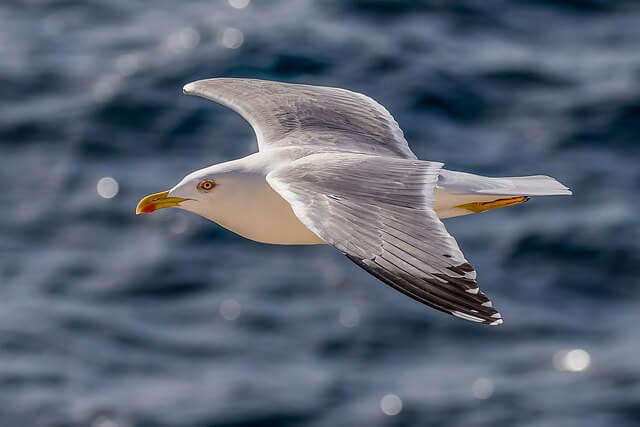
Seagulls are a familiar sight on the coastlines of the world, scavenging for food and playing an important role in maintaining coastal ecosystems. Different seagull species have different scavenging habits, with some being more opportunistic than others. For example, Herring Gulls and Great Black-backed Gulls are known to scavenge on a wide variety of prey, including fish, crabs, and even small mammals, while California Gulls and Western Gulls tend to stick to smaller prey like insects and mollusks.
Despite their reputation as scavengers, seagulls play an important role in the coastal ecosystem by helping to clean up dead and decaying matter. They also provide important nutrients for other organisms through their droppings. However, overpopulation of seagulls can have negative impacts on coastal communities, such as noise pollution and damage to property.
Below is a summary table of important information about different seagull species and their scavenging habits:
| Seagull Species | Scavenging Habits |
|---|---|
| Herring Gull | Opportunistic, scavenges on a variety of prey |
| Great Black-backed Gull | Opportunistic, scavenges on a variety of prey |
| California Gull | Tends to scavenge on smaller prey like insects and mollusks |
| Western Gull | Tends to scavenge on smaller prey like insects and mollusks |
Related Post: 21 Amazing Facts About Seagulls (with Photos & Details)
Skua Gulls: Top Arctic Scavengers
Skua gulls are fascinating birds that have adapted to thrive in the harsh environments of the polar regions. There are several species of skua gulls, including the great skua, the South Polar skua, and the Arctic skua. These birds are known for their aggressive scavenging habits, which involve stealing food from other birds and mammals.
Skua gulls have several adaptations that enable them to be successful scavengers. They have powerful wings that allow them to fly long distances in search of food, and their sharp beaks and talons enable them to tear apart tough carcasses. Skua gulls are also highly intelligent and have been known to work together in groups to steal food from larger predators.
A small table summarizing important information about skua gulls’ scavenging habits is as follows:
| Species | Habitat | Prey | Scavenging Habits |
|---|---|---|---|
| Great Skua | Coastal regions | Fish, birds, small mammals | Opportunistic, aggressive |
| South Polar Skua | Antarctic region | Seabirds, fish | Aggressive, kleptoparasitic |
| Arctic Skua | Arctic regions | Lemmings, seabirds, fish | Opportunistic, kleptoparasitic |
Overall, skua gulls are remarkable scavengers that have developed unique adaptations and behaviors to survive in the polar regions. Their aggressive scavenging habits and intelligence make them one of the most fascinating bird species to study.
Related Post: 12 Birds That Eat Turtles (That Will Surprise You!)

